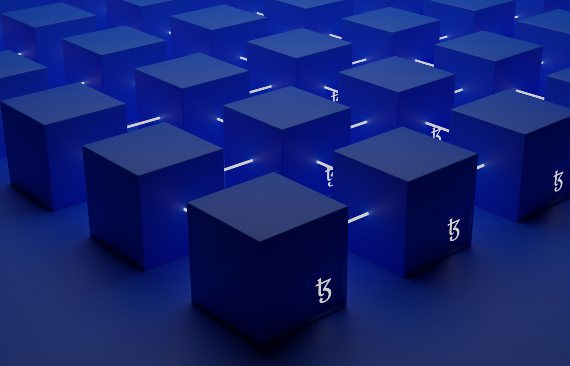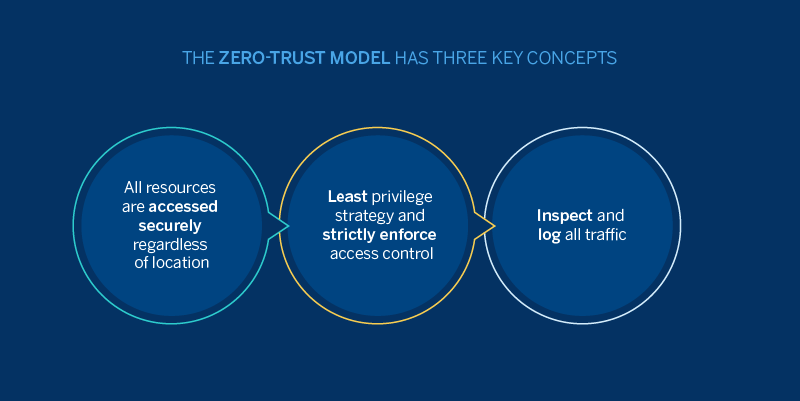Cybersecurity has become a critical issue for businesses and individuals alike, as the threat of cyber-attacks continues to grow. The increasing amount of sensitive information being stored and transmitted online has made it more important than ever to protect against cybercrime. Despite the fact that cybersecurity measures have improved significantly in recent years, so too have the techniques of cyber criminals. As a result, the future of cybersecurity looks set to be a constant battle between those who would protect information and those who would steal it.

One of the biggest trends in the future of cybersecurity is the use of artificial intelligence (AI) and machine learning (ML) technologies. AI and ML algorithms are able to analyze large amounts of data and detect patterns and anomalies that may indicate a potential threat. This allows organizations to quickly identify and respond to cyber-attacks, reducing the risk of damage and minimizing the impact of a breach.
AI-powered cybersecurity solutions can also be used to automate repetitive security tasks, freeing up human resources to focus on more complex issues. AI and ML can also be used to predict future cyber threats, based on historical data and trends. This will allow organizations to proactively defend against potential threats, reducing the risk of successful attacks.
Another trend in the future of cybersecurity is the use of blockchain technology. Blockchain is a decentralized ledger that can be used to securely store and transfer information. Because of its decentralized nature, it is much harder for cyber criminals to compromise a blockchain network, and so it is becoming increasingly popular for applications that require high levels of security. This is particularly true for industries such as finance, healthcare, and government, where the risk of data breaches can have serious consequences.

The rise of the Internet of Things (IoT) is also set to have a major impact on the future of cybersecurity. IoT devices are becoming increasingly common, and are often used to control critical systems and infrastructure. However, many IoT devices have poor security features, and can be easily compromised by cyber criminals. As a result, organizations will need to implement better security measures to protect against IoT-related cyber threats. This may include updating the firmware and software on IoT devices, or replacing them with more secure devices with multiple levels of security like 2FA .
Another major trend in cybersecurity is the increasing focus on collaboration between organizations. In the past, organizations have often been reluctant to share information about cyber threats, for fear of revealing their own vulnerabilities. However, this is changing, as organizations recognize that cyber threats are often too complex for any single organization to tackle alone. In response, many organizations are forming partnerships and sharing information to help protect against cyber-attacks. This includes sharing threat intelligence, best practices, and resources, as well as participating in joint cyber security operations.
Cybersecurity also has a major impact on national security, and governments are taking steps to protect their critical infrastructure from cyber-attacks. One example of this is the increasing use of ‘zero trust‘ security models, where access to sensitive information is strictly controlled and monitored. This approach reduces the risk of unauthorized access and helps to prevent cyber-attacks. Governments are also investing in research and development to stay ahead of the latest cyber threats, and to develop new technologies to better protect against these threats. This may include the development of new encryption algorithms, or the use of quantum computing to crack complex codes.

The future of cybersecurity and quantum computing is intertwined, as quantum computing has the potential to revolutionize the way data is protected and processed. Currently, most encryption algorithms used for cybersecurity rely on the fact that certain mathematical problems are difficult to solve with classical computers. However, quantum computers have the ability to solve these problems much more quickly, potentially rendering existing encryption methods obsolete.
On one hand, this means that quantum computers could be used to break existing encryption, posing a significant threat to cybersecurity. On the other hand, it also means that quantum computers could be used to develop new and more secure forms of encryption, offering unprecedented levels of protection for sensitive information.
One potential use of quantum computing in cybersecurity is the development of quantum algorithms to detect and respond to cyber-attacks. These algorithms could be used to analyze large amounts of data and detect patterns that may indicate a potential threat, allowing organizations to quickly identify and respond to cyber-attacks. Additionally, quantum algorithms could be used to predict future cyber threats, based on historical data and trends.

Cybersecurity and cloud computing are closely related, as the increased use of cloud computing has led to new security challenges and concerns. Cloud computing allows organizations to store and process data on remote servers, rather than on local devices, providing many benefits such as increased scalability and cost savings. However, the fact that sensitive data is stored on remote servers makes it more vulnerable to cyber-attacks.
One of the biggest security concerns with cloud computing is the risk of unauthorized access to sensitive information. This can occur if cyber criminals are able to compromise the security of the cloud provider’s servers, or if they are able to steal login credentials or other information that allows them to access the cloud-stored data. To mitigate this risk, organizations need to implement strong access controls and encryption, and use trusted cloud providers that implement robust security measures.
Another security concern with cloud computing is the risk of data breaches. This can occur if cyber criminals are able to penetrate the security of the cloud provider’s servers and access sensitive information stored on these servers. To minimize this risk, organizations need to ensure that their data is encrypted both in transit and at rest, and that they are using cloud providers that implement strong security measures to protect against data breaches.
In addition to these security concerns, there are also compliance and regulatory considerations that organizations need to be aware of when using cloud computing. For example, organizations that deal with sensitive information such as personal data or financial information, may be subject to strict regulations such as the EU’s General Data Protection Regulation (GDPR) or the US’ Sarbanes-Oxley Act. These regulations dictate the way that sensitive information can be stored, processed, and transmitted, and organizations need to ensure that they are in compliance with these regulations when using cloud computing.

To address these security concerns and regulatory requirements, many cloud providers are offering a range of security features, such as encryption, access controls, and monitoring. Organizations can also implement security measures such as multi-factor authentication, intrusion detection systems, and firewalls, to further enhance the security of their cloud-stored data.
The integration of 5G technology into the world of telecommunications presents both opportunities and challenges for cybersecurity. On one hand, 5G technology offers faster and more reliable communication, as well as increased connectivity, which can be beneficial for various industries and applications. On the other hand, 5G technology also introduces new security risks, as the increased speed and connectivity can be used by cyber criminals to launch more sophisticated and damaging attacks.
One major concern with 5G technology is the risk of cyber-attacks on 5G networks. 5G networks are designed to support millions of devices, which can make them a prime target for cyber criminals. Additionally, 5G networks use software-defined networking (SDN) which makes them more vulnerable to attacks that can take advantage of software vulnerabilities. To minimize this risk, organizations need to implement strong security measures, such as encryption, access controls, and intrusion detection systems, and they need to ensure that they are using trusted 5G network providers that implement robust security measures.
Another security concern with 5G technology is the risk of IoT devices becoming compromised. IoT devices are expected to play a significant role in the 5G ecosystem, and these devices often have limited computing power and security features, making them vulnerable to attacks. To minimize this risk, organizations need to ensure that their IoT devices are properly secured, and that they are using trusted IoT device manufacturers that implement strong security measures.

Furthermore, 5G technology also introduces new privacy concerns. 5G networks are designed to support a wide range of applications and services, which can result in large amounts of sensitive information being transmitted over the network. To minimize this risk, organizations need to ensure that their sensitive information is encrypted both in transit and at rest, and they need to ensure that they are using trusted 5G network providers that implement strong privacy measures.
In addition to technology and collaboration, the future of cybersecurity will also be shaped by regulation and legal frameworks. Governments are increasingly passing laws and regulations aimed at protecting sensitive information, and holding organizations accountable for data breaches. This includes laws that require organizations to implement certain security measures, such as encryption and multi-factor authentication, as well as laws that set penalties for data breaches. Organizations will need to stay informed about the latest laws and regulations.
Ahmed Banafa, Author the Books:
Secure and Smart Internet of Things (IoT) Using Blockchain and AI
Comments on this publication